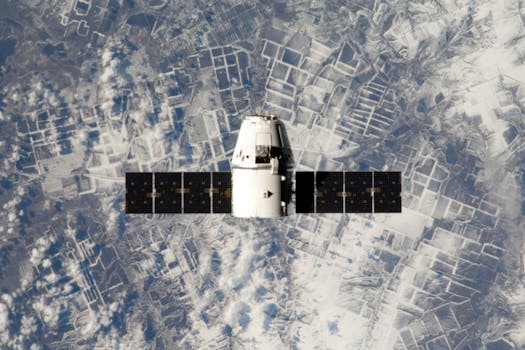The Future of Satellites: Revolutionizing Global Connectivity
The future of satellites holds great promise for revolutionizing global connectivity, enabling faster and more reliable communication, navigation, and remote sensing. With advancements in space technology, satellites are becoming increasingly important for various applications, including telecommunications, weather forecasting, and Earth observation.

The Future of Satellites: Revolutionizing Global Connectivity
The future of satellites holds great promise for revolutionizing global connectivity, enabling faster and more reliable communication, navigation, and remote sensing. With advancements in space technology, satellites are becoming increasingly important for various applications, including telecommunications, weather forecasting, and Earth observation. The use of satellites has been steadily increasing over the years, with thousands of satellites currently orbiting the Earth, and many more planned for launch in the coming years.
Advancements in Satellite Technology
Recent advancements in satellite technology have led to the development of smaller, cheaper, and more efficient satellites. These satellites, known as smallsats or cubesats, are being used for a variety of applications, including Earth observation, communication, and navigation. The use of smallsats has made it possible for companies and organizations to launch their own satellites, reducing the cost and increasing the accessibility of space technology.
Another significant advancement in satellite technology is the development of satellite constellations. These constellations consist of hundreds or thousands of satellites working together to provide global coverage and enable real-time communication and navigation. Companies such as SpaceX, OneWeb, and Amazon are currently developing satellite constellations to provide high-speed internet access to remote and underserved communities around the world.
Applications of Satellites
Satellites have a wide range of applications, including telecommunications, weather forecasting, Earth observation, and navigation. Telecommunication satellites are used to provide internet access, telephone services, and television broadcasting to remote and underserved communities. Weather forecasting satellites are used to monitor weather patterns and provide early warnings for natural disasters such as hurricanes and tsunamis.
Earth observation satellites are used to monitor the health of the planet, track climate change, and detect natural resources such as oil and gas. Navigation satellites, such as GPS, are used to provide location information and enable navigation for aircraft, ships, and vehicles.
Challenges and Opportunities
Despite the many advancements in satellite technology, there are still several challenges that need to be addressed. One of the biggest challenges is the increasing amount of space debris in Earth’s orbit, which poses a risk to operational satellites and the environment. Another challenge is the need for sustainable and responsible use of space technology, including the development of guidelines and regulations for the use of satellites.
However, the future of satellites also holds many opportunities, including the potential for satellites to provide global connectivity, enable remote sensing, and support sustainable development. With the increasing use of satellites, there is a growing need for skilled professionals in the field of satellite technology, including engineers, scientists, and policymakers.



